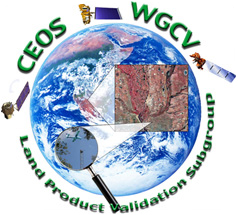
Focus Area on Surface Radiation/Albedo Product Validation
Zhuosen Wang, University of Maryland/GSFC, USA
Angela Erb, Leidos, Boston, Massachusetts, USA
Jorge Sánchez-Zapero, EOLab, Valencia, Spain
Albedo Definition
Surface Albedo is defined as the ratio of the radiant flux reflected from a unit surface area into the whole hemisphere to the incident radiant flux of hemispherical angular extent (Schaepman-Strub et al., 2006). It can be defined for broad spectral regions or for spectral bands of finite width. Albedo measures include black-sky albedo (or directional hemispherical reflectance, DHR) defined in the absence of a diffuse irradiance component (no atmospheric scattering), white-sky albedo under wholly diffuse conditions (or bihemispherical reflectance, BHR, under isotropic illumination), and actual or blue-sky albedo (BHR under ambient conditions).
Units: Albedo is a non-dimensional quantity.
Highest Validation Stage Currently Reached for Satellite-Derived Albedo Products
Validation stage 3 (LPV validation stage hierarchy) - The highest LPV validation stage reached for satellite-derived albedo products. Limitations in reaching higher validation stage are due to the sparse spatial distribution of high-quality albedometers with representative footprints at satellite pixel scales, and missing aerosol optical depth measurements (sun photometer or satellite-derived) required to generate blue-sky albedo from satellite-derived black- and white-sky albedo products.
Validation Good Practices
In 2019, the surface radiation focus area of the LPV Subgroup published a Best Practices Protocol document for validation of global albedo products. The document is available for download:
Wang, Z., Schaaf, C., Lattanzio, A., Carrer, D., Grant, I., Román, M., Camacho, F., Yu, Y., Sánchez-Zapero, J. & Nickeson, J. (2019). Global Surface Albedo Product Validation Best Practices Protocol. Version 1.0. In Z. Wang, J. Nickeson & M. Román (Eds.), Good Practices for Satellite Derived Land Product Validation (p. 45): Land Product Validation Subgroup (WGCV/CEOS), doi: 10.5067/DOC/CEOSWGCV/LPV/ALBEDO.001
Download: CEOS_ALBEDO_Protocol_20190307_v1.pdf (2MB)
Albedo Validation Reference Data Sets
Best currently available in situ reference data for satellite-derived albedo product validation are provided by in situ operational networks such as BSRN, Surfrad, Fluxnet, TERN, NEON, and ICOS. At this point, these data sets are only available in their original formats. We are currently working on development of a quality-screened data set of spatially representative sites that will be accessible through the online Surface ALbedo VALidation (SALVAL) tool. The public release of this tool is expected by end of 2021.
The validation of land surface albedo from geostationary satellites is currently being addressed within the Scope-CM project (see our Collaboration page). The EUMETSAT Meteosat Surface Albedo (MSA) product has been evaluated within the ALBEDOVAL-1 and ALBEDOVAL-2 projects, that utilized a database of vallidation sites referred to as the Surface Albedo Validation Sites (SAVS). EUMETSAT hosts the sites database and the SAVS web page displays a map of the site locations as well as a link to a summary report page, where the database of sites can be downloaded. The details of each site can be interrogated either by clicking on the site locations on the map, or from the detailed summary page where the sites are all listed with links to the same details.
LPV Focus Areas
Meetings
Land Product Validation and Evolution, June 12 -14, 2023 ESA/ESRIN, Italy.
IGARRS 2023, 16-21 July 2023, Pasadena, CA. Abstract submission due 18 Nov 2022.
EGU 2023, 23-28 April 2023, Vienna, Austria. Abstract submission due 10 Jan 2023.
- NASA Official: Sadashiva Devadiga
- Website Manager: Jaime Nickeson
- Last Updated: September 3, 2025


